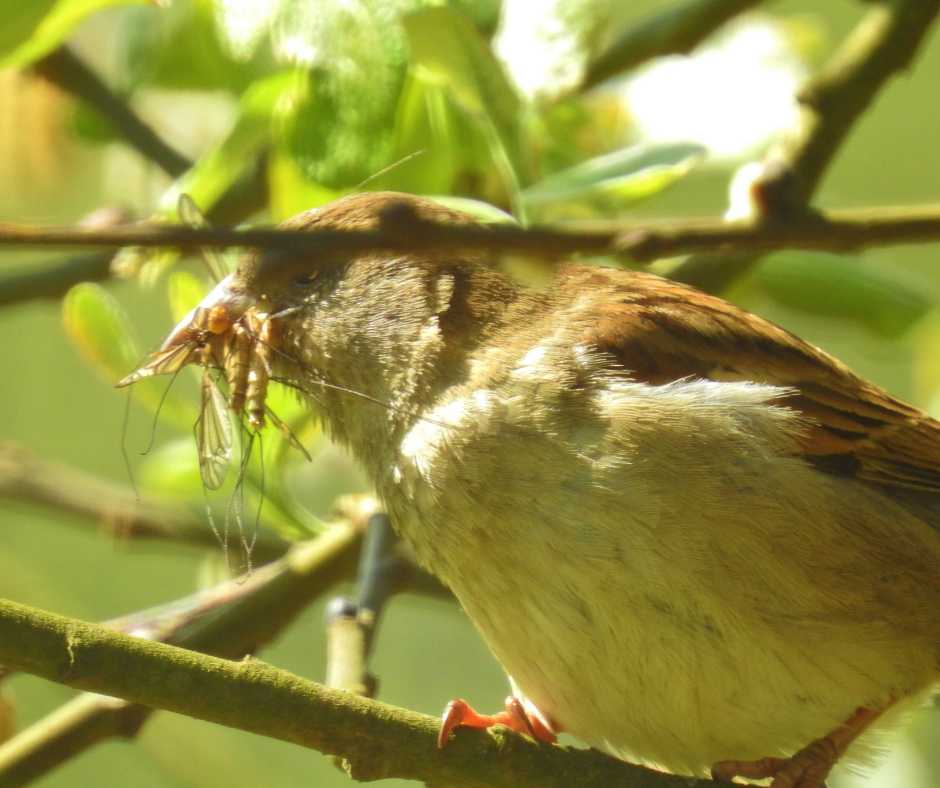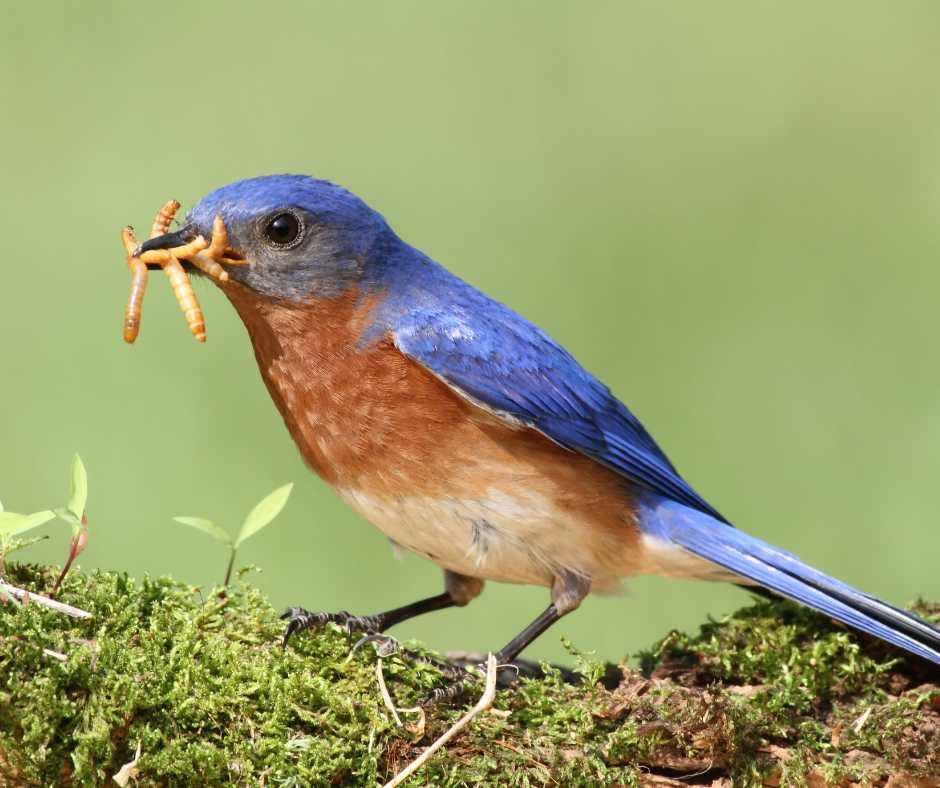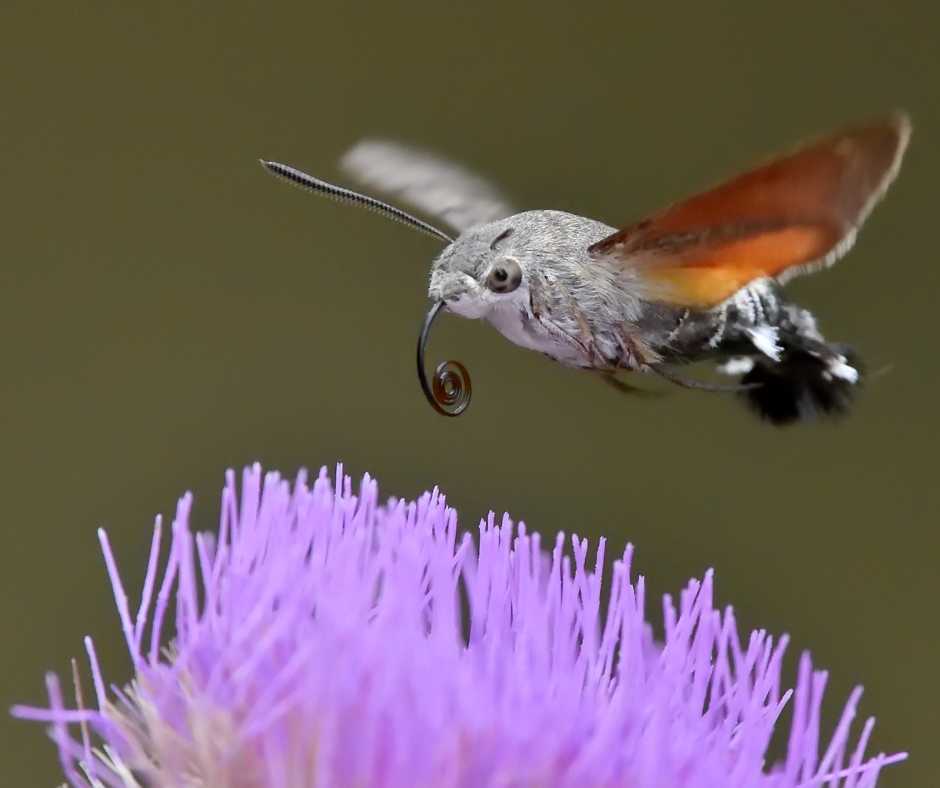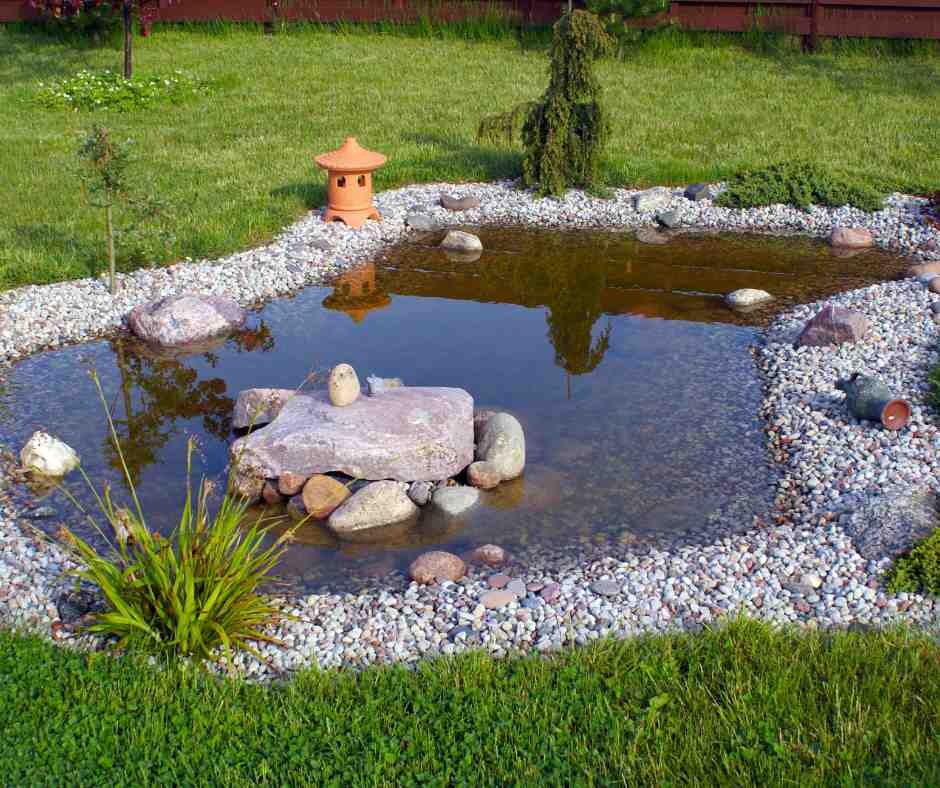Did you know inviting bug-eating birds into your garden is like unlocking a natural pest control treasure? These feathered friends are not a delight to watch; they work tirelessly to keep your garden healthy by dining on common pests. Each bird plays a crucial role in the ecosystem, from vibrant cardinals to nimble chickadees.
So, how to attract bug-eating birds?
To attract bug-eating birds to your garden, provide natural shelters with trees and shrubs, offer diverse foods like sunflower seeds and mealworms, and include water features for drinking and bathing. Keeping cats indoors helps ensure a haven for these beneficial birds.
This guide will teach you how to transform your garden into a bird-friendly paradise, ensuring a balanced, thriving outdoor space. Get ready to discover the simple steps to attract these beneficial birds and make your garden a vibrant, pest-free zone.
Why Your Garden Needs Bug-Eating Birds
Imagine your garden as a diner for birds, where bug-eating varieties act as natural pest control, working tirelessly for free to keep your plants healthy. Let’s explore why these birds are essential to your garden’s ecosystem.
Natural Pest Control Agents
Imagine this: aphids are all over your roses, beetles are munching on your beans, and caterpillars can’t get enough of your cabbages. Not great, huh? But then, bluebirds, chickadees, and their friends dive in like superheroes. They’re here to eat up those bugs.
Aphids are like their favorite candy for chickadees, and bluebirds love a mix of beetles and larvae, making a meal out of garden pests. It’s a great swap: the birds get to eat, and you get to say bye to those pesky bugs. And those tricky slugs and snails? Thrushes can’t resist them.

The Circle of Life: Birds and Biodiversity
Think of your garden full of life, birds, animals, and plants living together. This is called biodiversity, and bug-eating birds are very good at making it happen. When you invite these birds into your garden, you’re helping a whole world of nature grow right in your backyard.
Each kind of bird likes to eat different bugs, which helps keep any bug from causing too much trouble. Birds also help plants grow by pollinating them and spreading their seeds around.
The best part is that you don’t need harmful chemicals to kill bugs with all these birds around. Fewer chemicals mean it’s safer for birds, other helpful bugs, and people. It’s like having the most fabulous garden party where everyone, flying or not, helps keep things healthy and happy.
So, making your garden a place where birds want to hang out doesn’t give you a great view of nature’s wonders, but it also makes your little piece of the earth a healthier place. And that’s worth sharing!
Meet the Feathered Friends of Your Garden
Let’s roll out the red carpet for the feathery friends who keep those pesky pests at bay. From the colorful to the acrobatic, these birds bring more than beauty to our backyards; they get an all-natural and free pest control service!
The Mighty Hunters: Bluebirds, Nuthatches, and Chickadees
First, meet the bluebird, the poster child for a pest-free garden. These blue beauties are like the neighborhood watch for insects. They have a particular taste for grasshoppers, crickets, and beetles. Imagine a bluebird doing a fly-by in your garden, scooping up those pests like a superhero.
Then there are the nuthatches, the tree trunk ninjas. With their unique ability to walk head-first down trees, they snatch up insects hidden in the bark that most birds would miss. Talk about a secret weapon!
And remember the chickadees, tiny but mighty. They love to snack on aphids and caterpillars. It’s like watching a mini-bird buffet as they pick pests off your plants with precision.

The Colorful Protectors: Cardinals, Orioles, and Tanagers
For a splash of color and flair, cardinals take center stage with their vibrant red feathers. They’re like the guardians of your garden, feeding on beetles and snails. Watching a cardinal in action is like seeing Mother Nature’s pest control in a beautiful red coat.
With their striking orange and black plumage, orioles aren’t just a treat for the eyes. They’re on a mission to rid your garden of caterpillars and grubs. Plus, their love for nectar helps with pollination—talk about double duty!
Tanagers, the shy bunch, prefer to work behind the scenes. Their diet includes some of the more elusive pests like wasps. Yes, they take on wasps, so you don’t have to!
The Aerial Acrobats: Swallows, Purple Martins, and Hummingbirds
Have you ever seen a bird show in your backyard? Swallows and purple martins are the acrobats of the bird world, performing aerial stunts while feasting on flying insects. These birds are like nature’s version of a bug zapper, catching mosquitoes, flies, and even moths on the wing.
And hummingbirds, the tiny dynamos, zip around the garden, picking off aphids, mites, and spiders. They’re like the special ops of the garden, targeting the pests that are too small for others to bother with.

Creating a Sanctuary: How to Attract Bug-Eating Birds
Transforming your garden into a sanctuary for bug-eating birds brings a flurry of feathered friends to your backyard and contributes to a balanced ecosystem at your doorstep. Let’s dive deeper into how you can create a haven that invites these natural pest controllers to visit and stay.
Architecting Shelter: Trees, Shrubs, and Birdhouses
Creating shelter is fundamental in welcoming birds. Birds seek spaces where they feel secure and can nest away from predators. Integrating a variety of trees and shrubs can provide the perfect blend of habitat and food sources. For instance, native species like dogwoods or serviceberries offer nesting spots and seasonal snacks with fruits and berries.
DIY birdhouses present a fantastic opportunity to engage actively with your garden’s ecosystem. When building or buying a birdhouse, consider the specific needs of the species you wish to attract. For example, each bird species has a preferred entrance hole size to keep out predators and competitors.
Placing these birdhouses at different heights and locations caters to the nesting preferences of various species, from the tree-loving nuthatches to the fence-preferred wrens.
You may also read: How to Make Roosting Pockets for Birds
A Feast for Wings: Feeding Your Avian Allies
Feeding birds is more than putting food in a feeder. You want to give them food they would find in nature. Different seeds like sunflower, nyjer, and even peanuts can bring all kinds of birds to your yard, from tiny finches to big jays.
When bugs are hard to find in winter, suet feeders give birds the energy they need. Mealworms are a yummy extra for birds like bluebirds and robins, giving them essential nutrients.
Where you put the feeders is essential, too. Ensure they are safe from predators but close enough to where birds can hide. Spreading the feeders means birds won’t fight over food, and everyone can eat peacefully.
The Watering Hole: Ponds, Birdbaths, and Water Features
Water features serve as a magnet for birds, not only for hydration but also for bathing, which helps birds maintain their feather health. Birdbaths should be shallow with sloped sides, allowing birds of all sizes to wade in without fear. Adding a few stones or a rough surface can provide secure footing.
For those looking to go the extra mile, installing a pond or a fountain can create a dynamic element in your garden that attracts birds with the sound and sight of moving water. Regular maintenance to ensure clean, fresh water will keep birds coming back and prevent the spread of diseases.

Safe Haven: Keeping Predators at Bay
Predators might scare away the birds in your garden. Cats are considerable threats to birds. If you keep cats inside or watch them closely when they’re outside, birds will be safer.
You can also put guards on trees and birdhouses to stop snakes, squirrels, and giant birds from getting to the nests. Putting feeders and birdbaths where birds can quickly hide helps them feel safe.
By doing these things and learning what different birds need, you can make your backyard an excellent place for birds. This safe spot for birds means you can see all kinds of birds up close and enjoy nature at home.
People Also Asked
What’s the best food to attract bug-eating birds?
Sunflower seeds, suet cakes, and mealworms are like fast food for birds—easy to find and hard to resist.
Do bird feeders attract pests?
Sometimes, yes. But keeping the area clean and using pest-resistant feeders can help keep the bugs away.
How often should I change the water in a birdbath?
Freshen it up every few days to keep it clean and inviting. Think of it like a mini spa for your bird buddies.
Can I attract birds without a garden?
Absolutely! Even a tiny balcony with a feeder or birdbath can become a cozy stopover for birds.
Where should I place a birdhouse in my garden?
Higher up and away from busy areas. Think of it as a quiet retreat spot for birds to raise their families.
Wrap Up
Turning your garden into a haven for bug-eating birds is like opening a door to a whole new world. You not only get to enjoy a vibrant, buzzing backyard but also take a giant step toward keeping those pesky pests naturally under control. It’s a win-win for your plants, the birds, and the planet.
Why not start with something simple? A bird feeder or a small birdbath can make a big difference. These small gestures invite the flutter and chatter of birds, turning your garden into a lively spot full of natural wonders. Plus, you’re doing your bit for the environment by supporting local wildlife.
So, what’s stopping you? Take that first step and add a bird-friendly feature to your garden. Watch as it transforms into a bustling hub of activity, bringing joy and color to your daily life. Your garden, and indeed the birds, will thank you for it.

